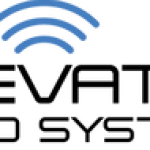In today’s world, safety and security are paramount, especially in places like office buildings, residential complexes, and public spaces. Elevators, in particular, are high-traffic areas where incidents can occur without notice. Hence, having reliable cameras for elevators is crucial. Advanced surveillance solutions have become indispensable for monitoring activities, ensuring safety, and maintaining order in such enclosed spaces.
But what makes a camera suitable for elevators? In this comprehensive guide, we’ll explore the key features, the top models available, and why choosing the right camera is essential for effective surveillance.
Why Do Elevators Need Advanced Surveillance Solutions?
Elevators are more than just a means of transport between floors. They serve as enclosed, isolated spaces that can be prone to security risks such as vandalism, assaults, and technical emergencies. Here's why surveillance is essential:
- Enhanced Security: Prevents theft, vandalism, and other criminal activities.
- Safety Compliance: Meets legal safety regulations and standards.
- Passenger Comfort: Provides a sense of safety and assurance for users.
- Emergency Monitoring: Helps in emergency situations by monitoring and recording.
Key Features to Look for in Reliable Elevator Cameras
When selecting a camera for elevator surveillance, specific features are non-negotiable. Let’s break down what makes a reliable elevator camera:
Compact Size and Design
Elevators have limited space, so cameras need to be compact yet powerful. A small-sized camera can be discreetly placed in corners or the ceiling without obstructing passenger movement.
High-Definition Video Quality
Clear visuals are crucial. Opt for cameras with at least 1080p resolution to capture sharp and detailed footage. This ensures that even small details, such as facial features or suspicious objects, are visible.
Wide-Angle Lens
A wide-angle lens covers more area and reduces blind spots. Choose a camera with at least a 120-degree field of view to monitor the entire cabin.
4. Vandal-Proof and Tamper-Resistant Housing
Elevators are vulnerable to vandalism. Cameras with durable, tamper-resistant casings can withstand force and ensure that the device remains intact.
Low-Light Performance
Elevators often have varying lighting conditions. A camera with infrared or low-light capabilities ensures that footage is clear, even in dim lighting.
Motion Detection and Real-Time Alerts
Motion detection helps in alerting security personnel about unusual activities. Choose models with smart motion sensors and real-time notification features.
Easy Installation and Integration
The compact space inside an elevator demands easy installation. Opt for cameras with wireless or compact wiring systems for hassle-free setup.
8. Audio Capabilities
Audio recording can capture verbal altercations or provide additional context in case of disputes or emergencies.
Top Camera Models for Elevators
Choosing the best camera for an elevator can be daunting given the various models available. Here’s a list of some of the best and most reliable cameras for elevators:
Axis P3227-LV Network Camera
The Axis P3227-LV is known for its sleek design and high-definition video quality. With a vandal-resistant casing, it’s ideal for high-risk areas. It also features IR illumination, making it suitable for low-light conditions.
- Resolution: 1080p Full HD
- Field of View: 98 degrees
- Features: Day/Night function, Remote Zoom, and Focus
Hikvision DS-2CD2563G0-IS
Hikvision is a trusted name in surveillance, and the DS-2CD2563G0-IS model is perfect for elevator monitoring. With its compact design, this 6MP camera offers exceptional image quality and a 120-degree viewing angle.
- Resolution: 6MP
- Field of View: 120 degrees
- Features: Low-light performance, Motion Detection, and Weather-Proof
Dahua DH-IPC-HDBW4231F-AS
Dahua’s dome camera is another excellent choice, featuring superior low-light technology and a wide dynamic range. It’s compact, durable, and perfect for elevator cabins.
- Resolution: 2MP Full HD
- Field of View: 110 degrees
- Features: Smart IR, H.265 Compression, and Built-in Microphone
Installation Tips for Elevator Cameras
Installing a camera in an elevator requires precision and consideration of space constraints. Here are some tips to ensure optimal coverage and effectiveness:
Choose the Right Mounting Position
Install the camera in a corner or on the ceiling for a clear, unobstructed view. Avoid placing it directly above doors, as this can limit the viewing angle.
Ensure Proper Wiring
Use flexible wiring that doesn’t interfere with elevator mechanics. Opt for wireless models if traditional wiring is challenging.
Test the Camera View
Before finalizing installation, test the camera view to ensure there are no blind spots. Adjust the angle to cover the entire cabin, including the control panel area.
Regular Maintenance and Checks
Conduct regular maintenance to ensure the camera is functioning correctly. Periodic checks can help identify issues like dirt accumulation, lens obstruction, or software glitches.
Benefits of Using Reliable Cameras in Elevators
Installing high-quality cameras in elevators goes beyond security. Here’s how you can benefit:
- Deter Criminal Activity: The presence of cameras discourages potential offenders.
- Evidence Collection: High-resolution footage can be used as evidence in case of disputes or incidents.
- Real-Time Monitoring: Live feeds can be accessed remotely, allowing quick action in emergencies.
- Compliance and Safety: Meets industry regulations and standards for safety.
Common Mistakes to Avoid When Choosing Elevator Cameras
Selecting an elevator camera might seem straightforward, but a few common mistakes can reduce its effectiveness. Here’s what to avoid:
Ignoring Resolution
Low-resolution cameras won’t capture crucial details. Always opt for at least 1080p resolution.
Overlooking Durability
Elevators are prone to vandalism. Avoid cameras without vandal-proof features.
Neglecting Motion Detection
A camera without motion detection might not alert you to incidents. Ensure this feature is enabled.
Conclusion
Reliable cameras for elevators are more than just surveillance tools; they are a means of ensuring safety and compliance in high-traffic areas. When choosing the right camera, consider factors like video quality, durability, low-light performance, and motion detection. With the right camera, you can monitor activities, deter unwanted behavior, and provide a safer environment for elevator users.





Comments